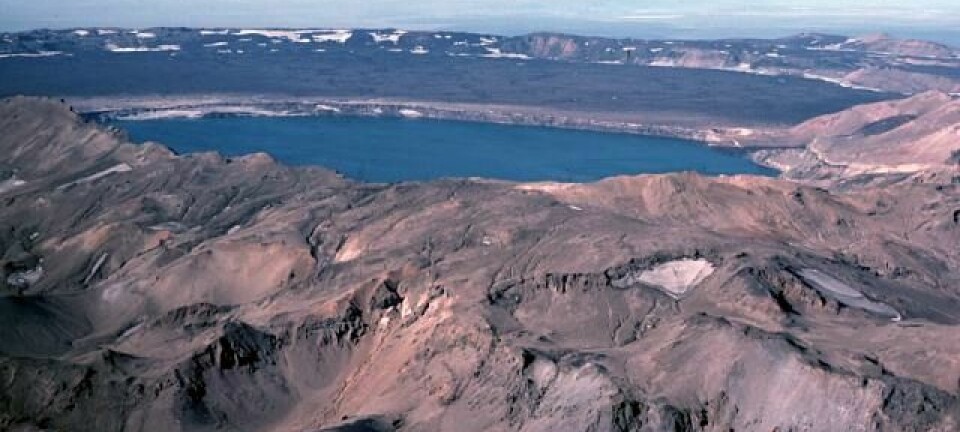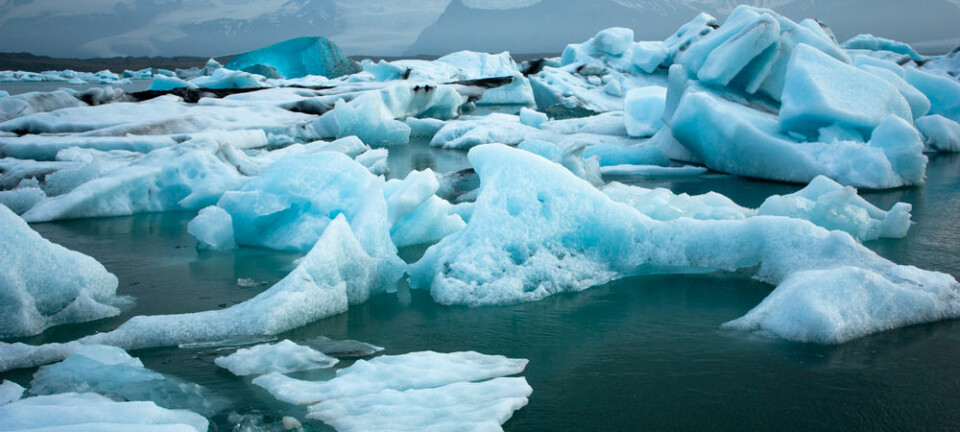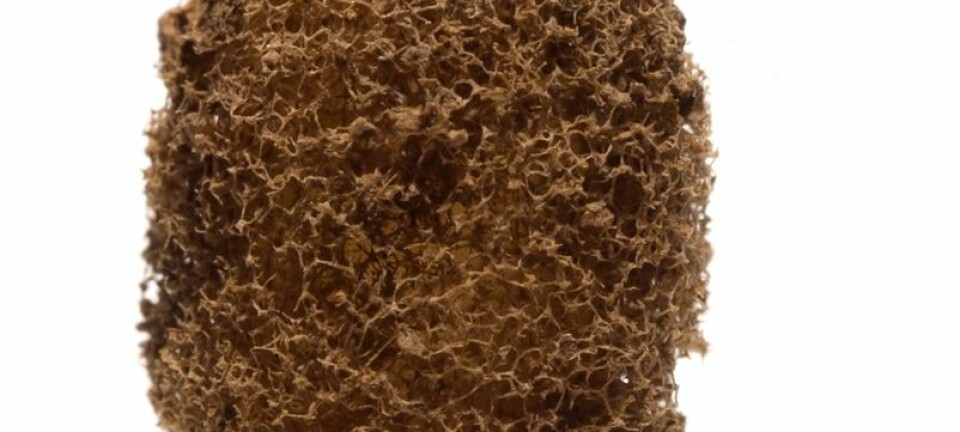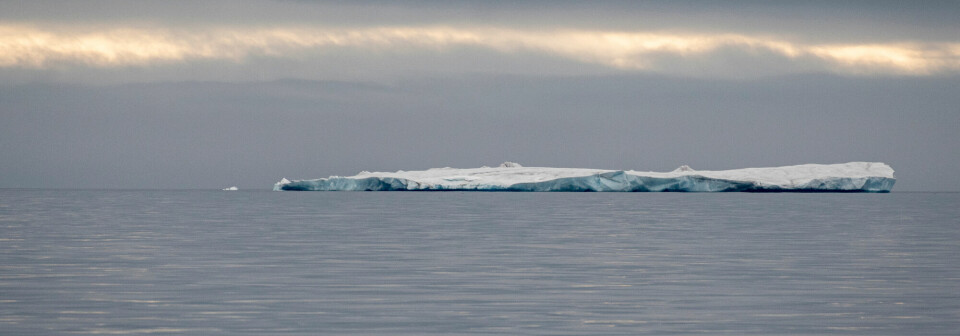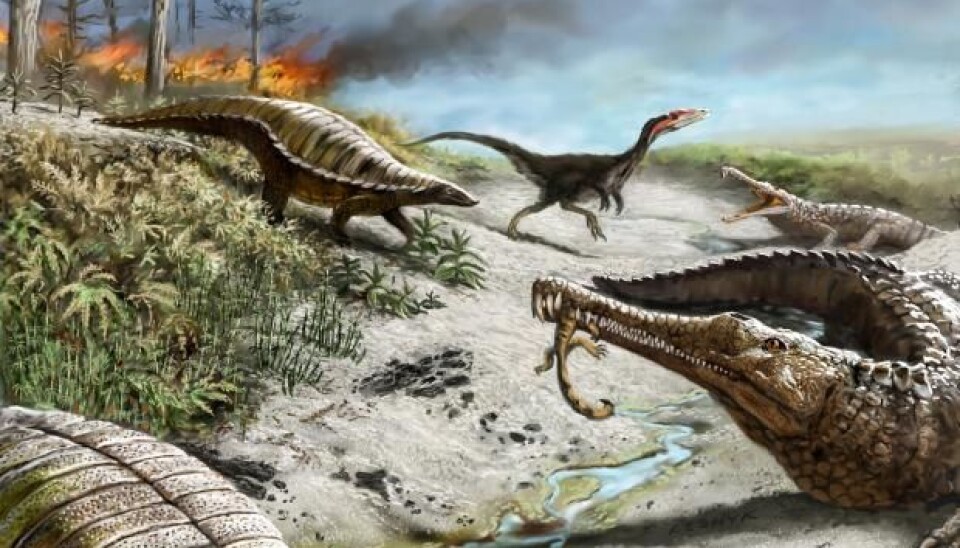
Why dinosaurs avoided the equator for 30 million years
Researchers have discovered why it took the dinosaurs 30 million years to capture the equator.
Scientists have long wondered why herbivorous dinosaurs stayed away from the equator in their first 30 million years of existence. A new study has the answers.
An unstable climate and intense forest fires simply made the equator an unbearable place to be, with too little food for such large animals.
This is the conclusion of a new study just published in the scientific publication PNAS.
"The climate in the tropical regions around the equator was too unstable with periods of extreme heat, and the vegetation was not sufficient to support a population of large herbivores. Therefore, we find only small carnivorous dinosaurs and other animal groups in the fossil remains from the equator at this time," says Sofie Lindström, a senior researcher at the Geological Survey of Denmark and Greenland who was involved with the study.
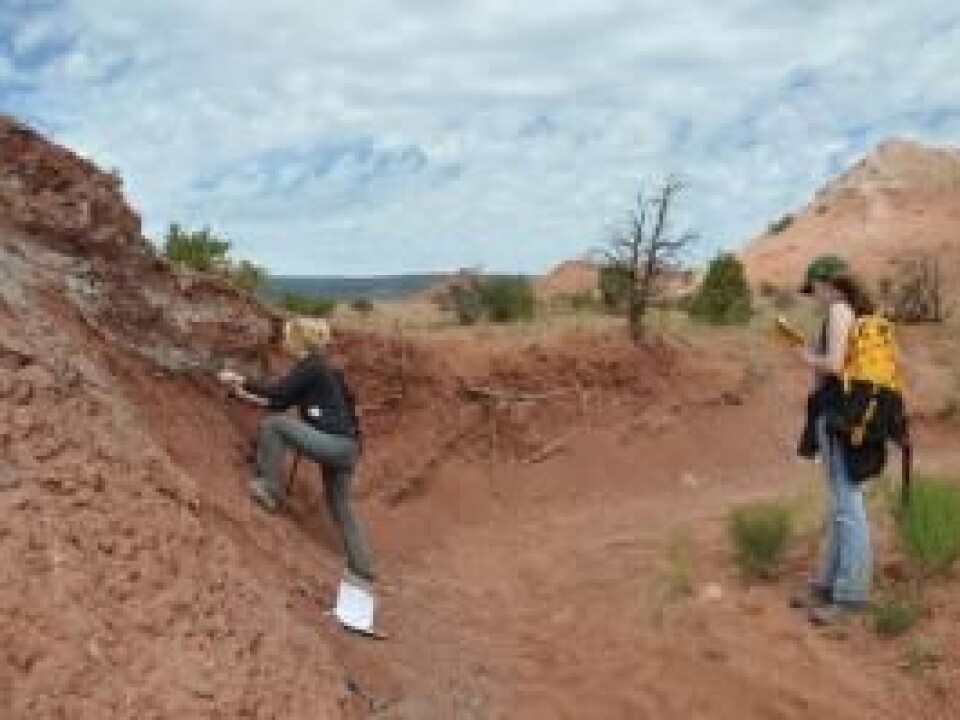
Fossilised remains of large animals at the equator consist largely of reptiles such as the Archosaurs -- ancestors of modern crocodiles.
No food in the deserts around the equator
When the dinosaurs emerged on the scene, 230 million years ago, it was difficult to find food around the equator, shows the new research.
North and south of the tropics herbivores had plenty of juicy seed ferns to eat, but when the climate was particularly cool and wet, the plants struggled to grow at the equator, meaning less food for the dinosaurs.
"Plant eating dinosaurs need a stable supply of food in order to exist at the equator. But major fluctuations in climate meant that the composition of the vegetation was constantly changing," says Lindström.
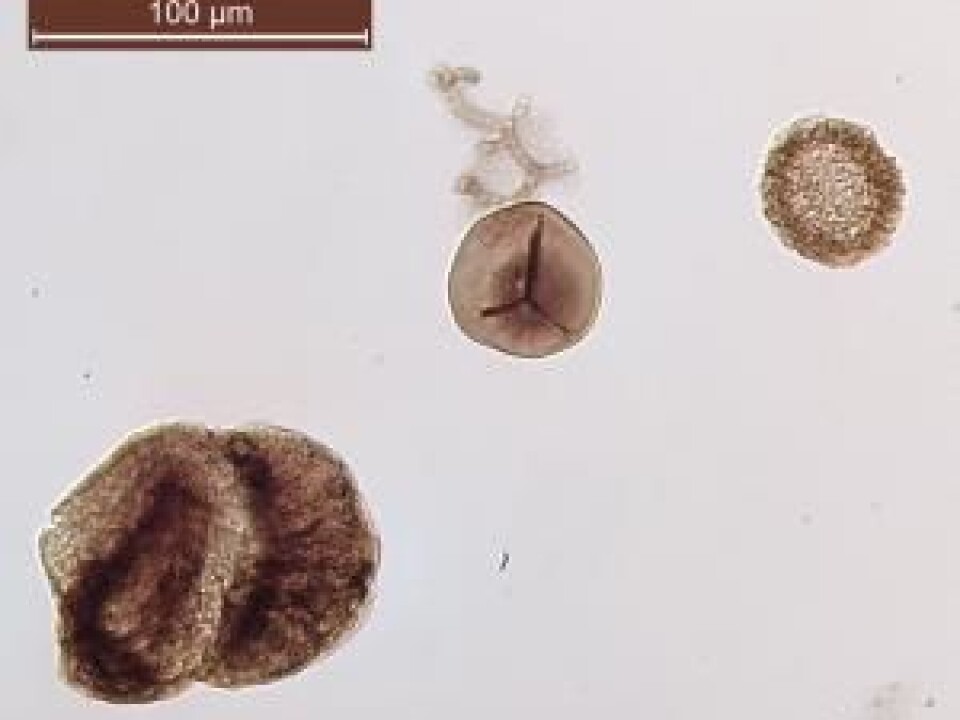
Temperatures swung wildly between cooler, humid periods, and periods of extreme heat.
In extremely warm periods, storms easily set parched vegetation ablaze. Without water to stop the wildfires, huge swathes of land could be subject to desertification.
"During this period, the content of CO2 in the atmosphere was four to six times as high as it is today, and so the greenhouse effect made the earth, and especially the equator, very hot. Many places along the equator would have been a desert, which we can see in the type of fossilised pollen found in sediment from the period," says Lindström.
The advantage of being warm-blooded
Jakob Vinther is an associate professor at the University of Bristol in England. He studies dinosaurs, but he was not involved in the new study.
According to Vinther, the study is interesting and provides a good explanation for what was happening during this period.
"For a long time, the dinosaurs lived in the shadow of the ancestors of crocodiles, and they only started to expand when the crocodiles ancestors started to disappear," says Vinther.
It makes sense that the climate played a big role in this, he says.
It was an advantage to be cold-blooded like the crocodile's ancestors when the climate was very hot. But later on when the climate was cooler, it was an advantage to be warm-blooded like the dinosaurs, allowing them to come onto the scene.
Answers came from pollen and charcoal
Scientists studied the carbon and charcoal content, carbon isotopes, pollen grains, and bone fragments, in rocks from New Mexico in the United States.
The rocks formed from sediment that had accumulated in a riverbed 212 million years ago.
Pollen debris and burned plant material (charcoal) became part of this sediment on the riverbed and over time became solid rock. Today the area is known as the Ghost Ranch in New Mexico, and according to Lindström, the rocks here tell a story as to what the climate was like 212 million years ago, when dinosaurs preferred to live away from the equator.
From the fossilized bones, researchers conclude that 212 million years ago, dinosaurs counted for just 15 per cent of all wildlife at the equator. They also found that they were neither as species-rich nor as large as the reptile, Archosaurs.
No large herbivores at the equator 212 million years ago
Scientists counted pollen grains preserved in the rocks to find out which plants and trees existed in the region at this time. They found that plants such as ferns, horsetails, and seed ferns, which large herbivores would need in order to survive, grew discontinuously.
In addition, the researchers saw a large shift in the type of plants over time.
The carbon content of the rocks is indicative of burnt wood from wildfires, and showed that the region experienced many large forest fires, probably wiping out large swathes of vegetation.
"All our findings point to the same conclusion -- that the equator was a very inhospitable place for millions of years. It is probably the answer to why there were no large herbivore dinosaurs in the period. Only after the climate changed, was the equator hospitable enough for the dinosaurs," says Lindström.
--------------
Read the Danish version of this article on Videnskab.dk
Translated by: Catherine Jex


